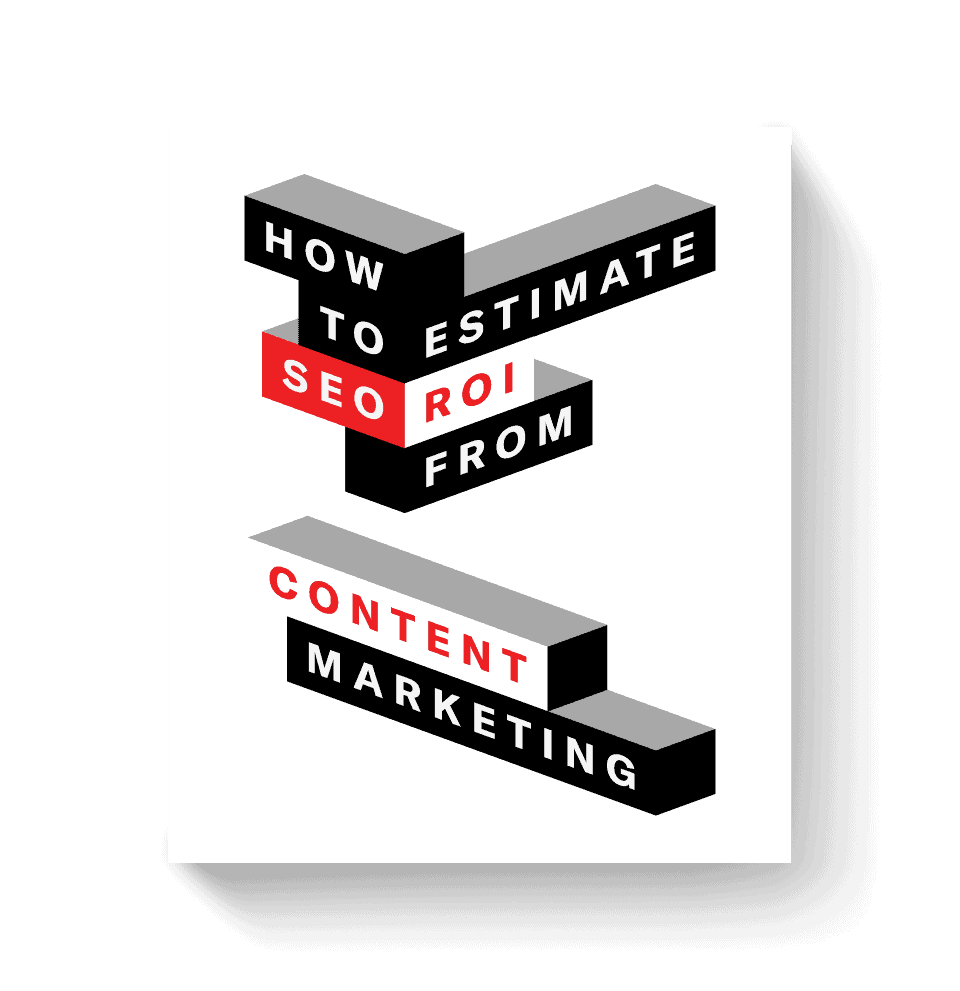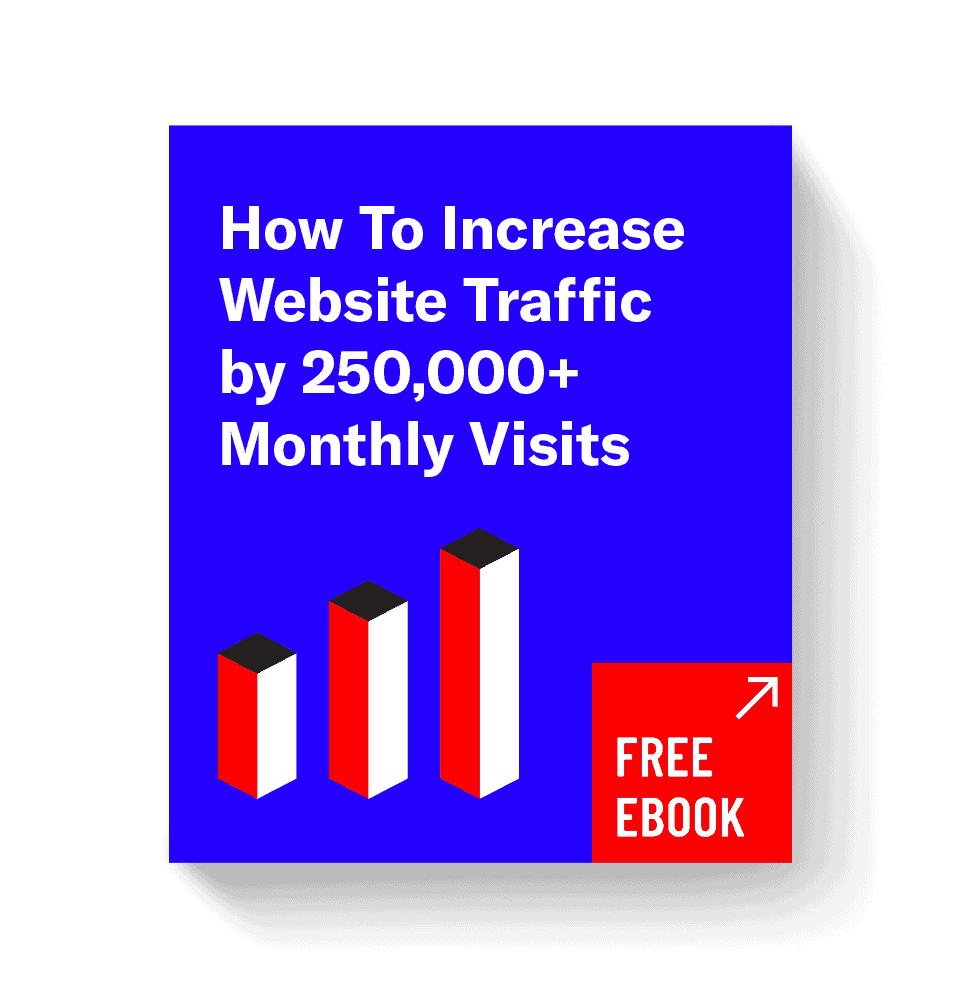Building an effective enterprise content marketing strategy means finding ways to get out of your own way and set your work up for success.
In this post, we’ll break down the strategies we use to get things done within larger organizations, help you identify potential red flags that can derail your programs, and identify when it makes sense to raise the white flag.
In this article:
- What Is Enterprise Content Marketing?
- Preparing for Your Enterprise Content Marketing Strategy
- It’s Best To Generate Links Passively
- Lean Into Sales Goals for Sustainable Results
- Account for Existing Content
- Agencies May Have Extra Value
- Boldly Go Where No Marketer Has Gone Before
What is Enterprise Content Marketing?
First things first — is an enterprise content marketing strategy right for you? Enterprise content marketing refers to the tools, teams, and strategies to reach an enterprise-level organization’s target audiences through tailored content. This strategy covers each step of the process, including:
- Audience research
- Brand awareness
- Content creation (copy, design, videography)
- Content promotion
- Link acquisition
- Lead nurturing
Enterprise organizations typically employ more than 1,500 people and earn annual revenues of $38.5 million or more. With size and money comes more resources but also more red tape. The best practices in this article are designed to help organizations of this size navigate the common challenges associated with building strategies to support the goals of multiple teams across an organization.
Preparing For Your Enterprise Content Marketing Strategy
You’ll need much more than brainstorming sessions and content calendars for a successful content marketing strategy at the enterprise level. Before any content creation takes place, it’s important to take a step back and assess the readiness of both your website and your marketing team to address any roadblocks that may hinder the performance of your content marketing efforts. Ask yourself questions like:
- Does your team have the tools and roles needed to be successful?
- Is your website organized in a manner that promotes important content?
Below, we cover the areas within your team and website to review before leaping content creation.
Create a Content Hub Your Team Can Own
In enterprise organizations, website ownership gets broken down into smaller teams. This means getting things done comes down to fighting for change in areas of the website where teams have their own motivators.
To truly have an (almost) uninterrupted path forward, building a unique section of the site dedicated to your effort often makes sense.
Of course, it needs to make sense for your content strategy, but if you were on the fence about, say, building a learning center for your company before, enterprise dynamics might really make you lean into doing that.
This is a common playbook for SEO teams where a blog may have several brand and creative owners who don’t like seeing that kind of content conflict with their specific goals and messaging.
An Easy-to-Use CMS is Critical
You have enough red tape at a big company — don’t make your content management system (CMS) have another layer of it.
It’s not uncommon for enterprise organizations to have custom content management systems; unfortunately, it’s also not uncommon for those systems to be unwieldy and hard to use.
For a fast-moving content marketing strategy, defer to simplicity. If you’re lucky enough to carve out a unique section of the website, deploying a WordPress install on just that section can be beneficial for the most flexibility and user-friendliness moving forward.
We see many startups defer to the sexy CMS of the moment. Many of these come in waves of popularity, but in our experience, WordPress continues to be the most consistent preference for flexibility, time to value, and universal understanding by content marketers of the world.
They also have a WordPress VIP product for enterprise companies doing significant page views. Webflow and Contentful are solid options if you prefer some of their custom features.
Content Requires Several Roles
At a startup, you can write and edit a post end-to-end yourself.
In an enterprise organization, you must have several quality assurance layers. This increases costs and time required but also solidifies the brand that got the organization to where it is today. Those dependencies are:
- Professional editors
- Art Directors (design editors)
These two editing roles are needed for content, whether contract or full-time. If you proceed without them, your content will eventually get flagged internally by creative teams. You’d rather be prepared to meet brand requirements out of the gate than wake up to bigger issues once your content gets attention.
It’s Best To Generate Links Passively
Links matter, and they will continue to matter. That said, generating them through manual outreach at the enterprise level as a content marketer rarely makes sense. There’s a few reasons for that:
- PR teams own reporter relationships.
- There is more brand red tape around what you can or can’t say, making on-brand linkable assets more difficult to create.
- Enterprise website authority means you can generate many links by ranking for top-funnel assets.
The last bullet is the most important element of this. As a more prominent company, you can typically rank pretty easily once you can actually get the content live. This means you can create a link-building engine by ranking for strong top-funnel terms, especially if you lean into topics with strong link-to-view ratios.
View our video above for more tips about how to do this for your company.
Lean Into Sales Goals for Sustainable Results
Something we see with frequency at bigger companies is that they start a content marketing campaign earnestly, often rarely caring about bottom-funnel sales metrics at the first phase of the effort. Brand awareness is a thing many large companies accept as a positive goal.
This may be justifiable for a time, but it’s rarely sustainable. Even if leadership accepts traffic growth as an early indicator of success, you, as a content marketer, should be leaning into sales as a goal immediately.
This will inevitably lead to better sustainability for your campaign and longer-term budget increases for your department.
Account for Existing Content
Bryan Casey, Director of Digital Marketing at IBM, rolled out a successful content program that started slow. He realized that old content on the site (the green line) was actually weighing down perceived growth of the program, as he fought against the downtrend with new content (the blue line).
His team refocused efforts on content updates to fight that downtrend while still building out new articles. This strategy helped him push the numbers back up in the subsequent year.
The lesson here? At large companies, existing content debt can hold back the perceived impact of your new content. Refreshing content must be a big part of your strategy, even if that content wasn’t something you inherited coming in.
If you want to hear more about how Bryan implemented a successful enterprise content marketing strategy, check out our full podcast with him below.
Agencies May Have Extra Value
Let’s immediately state that we’re biased, as an agency is writing this article. That said, bigger companies still use agencies for a few reasons:.
- Many public companies are held to revenue per employee metrics, which makes hiring agencies attractive, given that increasing internal headcount is difficult.
- The larger a company gets, the more meetings tend to happen, making task completion difficult. Outsourcing often helps break this trend and can gap-fill tasks where your internal teams are stretched too thin.
- Large companies have established internal DNA. Finding experts in a new area is often easier than building a new muscle at a mature stage.
If you decide to go this route, we suggest appointing a dedicated person to own the agency relationship, who also has time to make the relationship productive.
We’ve seen large companies go with feedback by committee, which further breaks down productivity and ownership in most instances.
Boldly Go Where No Marketer Has Gone Before
Enterprise content marketing should be the USS Enterprise (of the Star Trek variety) for your industry. It aids in deep exploration, making contact with your audience, and discovering new avenues for growth. It may seem slow and imposing at first glance, but once it hits warp 9.5, your traffic graphs will take off up and to the right.
Need help unlocking your strategy? Head on over to our sales page to learn more about our enterprise content marketing services.








